2022-9-18
上一次在《奶杯小史》中说过:
其实奶杯中的一大类,也就是蹲鸟式的奶杯,是有带盖儿的,也有不带盖儿的。早期(康熙以前)的带盖儿,盛热牛奶用的,后期(雍正以后)的不带盖儿,放凉牛奶用的。都是配茶用的,是英国茶文化的一部分,虽然戴上了盖子,看起来怪怪的:
The earliest silver jugs, from the first decade of the 18th century, stood 5 or 6 inches tall, had D-shaped handles, spouts like beaks, and hinged domed lids, for the fashion at this time was for hot milk in tea. (This rather undermines the commonly held idea that cold milk was added to the tea bowl before the tea in order to prevent the porcelain from cracking.) In keeping with the new trend, the Duke of Grafton had a set of tea wares made in 1712, and the milk jug that was included with the teapot and sugar bowl had an ivory handle, a sharp spout, and a high domed lid. As the trend for milk in tea grew, the demand for jugs made of silver, porcelain, or pottery also increased. According to Colin Spencer, author of British Food: An Extraordinary Thousand Years of History, The East India Company’s sales of oriental porcelain included milk pots, with or without covers, in 1706, but not earlier. The fashion for hot milk does not seem to have lasted very long for, after around 1720, tiny, elegant jugs for cream or cold milk had no lid, were curvaceous and pear-shaped or squat and boat-shaped, with wide generous spouts, and three or four claw feet or a solid round base.
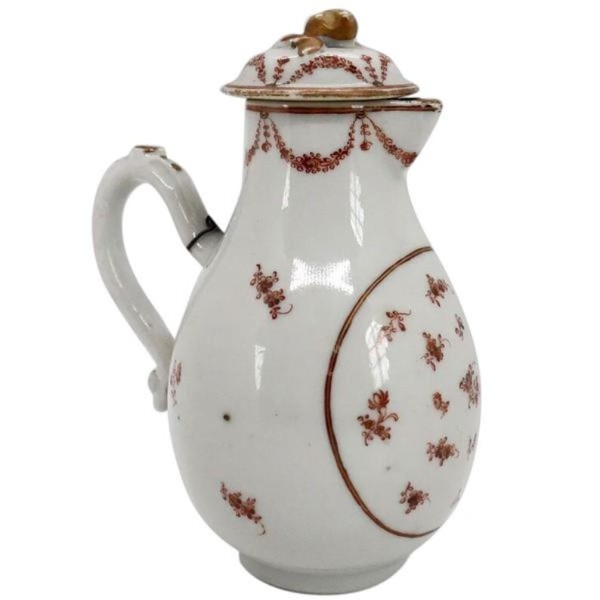
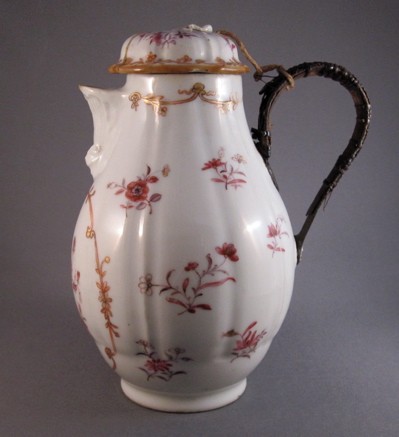
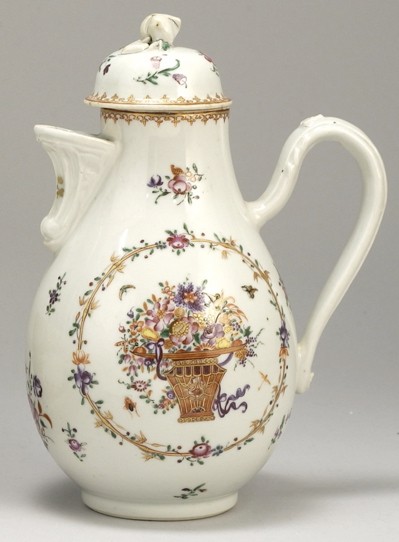

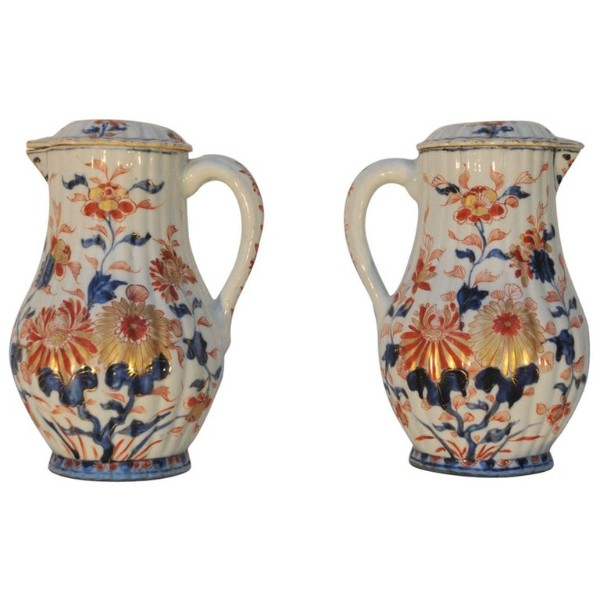
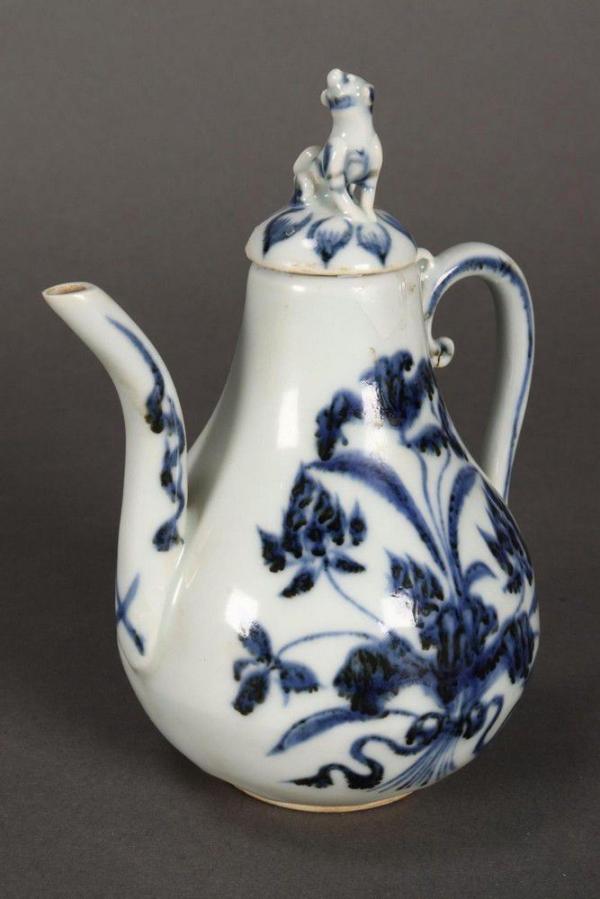


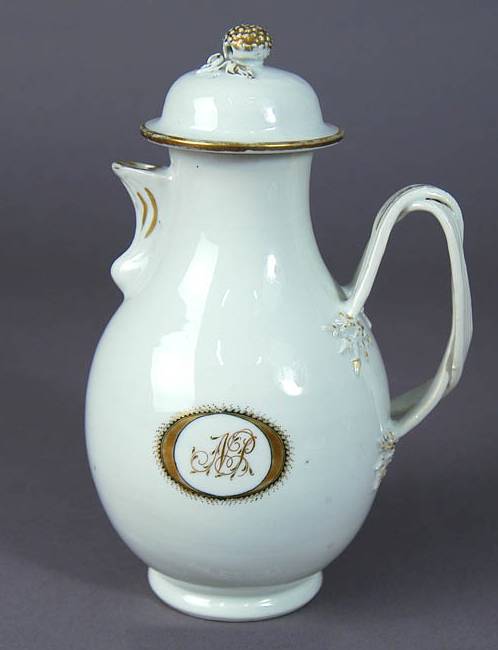
Gilt White Glaze Coffee Pot - Monogram 'NB'
Qianlong/Jiaqing period, Qing dynasty
Width inclusive of handle 15.3 cm, height 17 cm. Foot ring's diam. 8.9 cm
Collection of the City Museum of Gothenburg
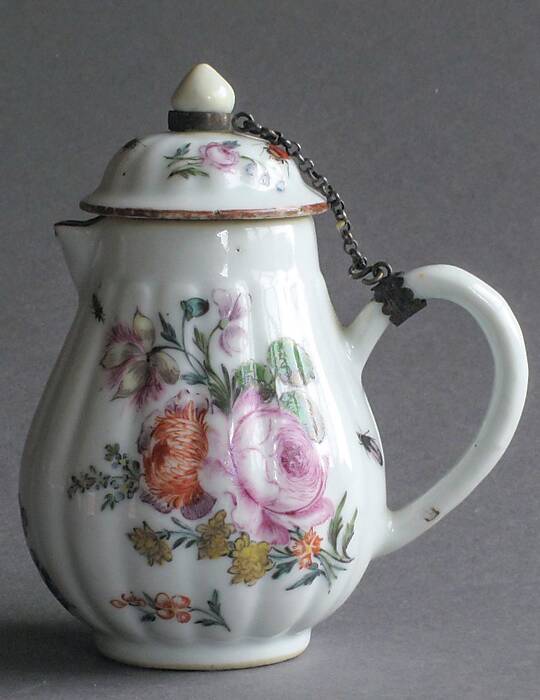
这种陶瓷奶杯的最早创意,来源是盛热牛奶而用的金属器:
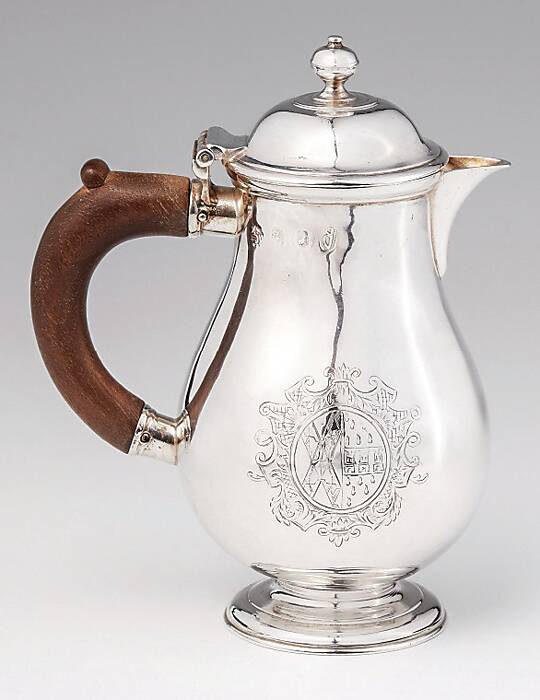
奶杯带不带盖儿,从口沿是不是沙口就可以看出来,沙口的肯定带盖,之所以沙口还不带盖儿,是因为在流传的过程中盖儿碎了或是失群了。
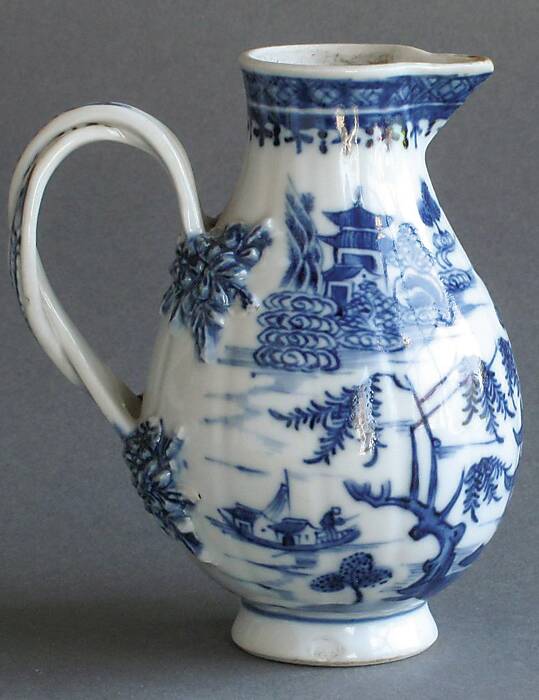
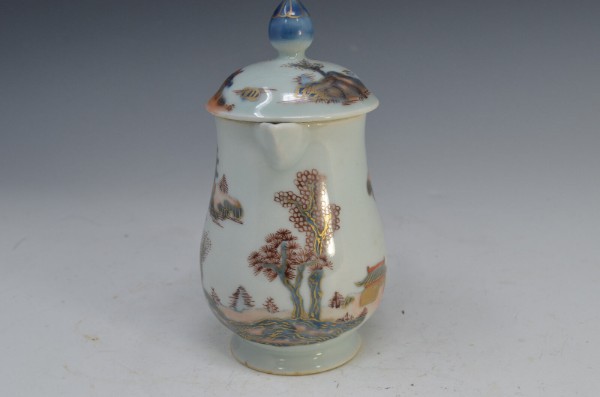
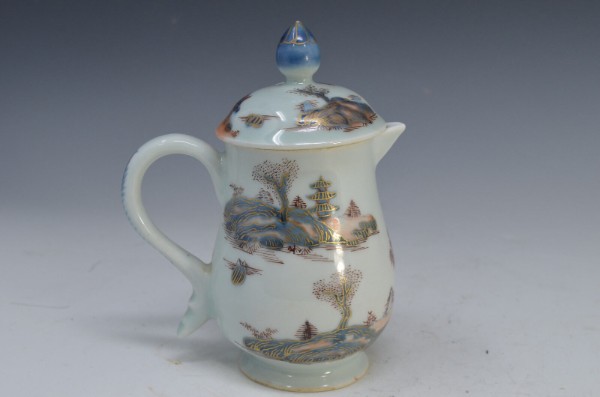

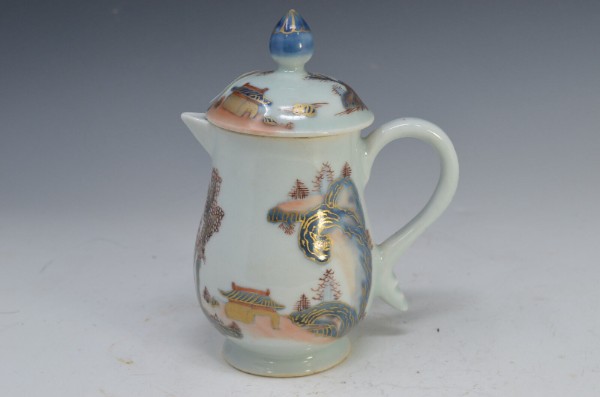
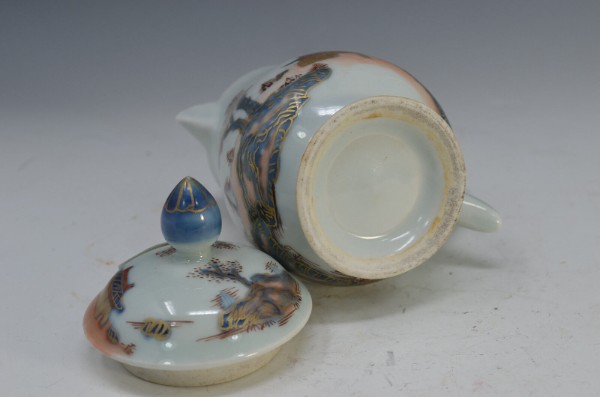
特此补充。
|
